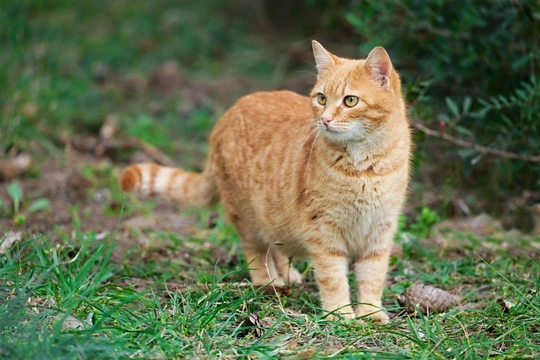
Is it possible to track or monitor your cat’s location and movements?
One question that most cat owners find themselves asking at some point when their cats have been outside exploring pastures unknown for a few hours is “where do they go all day?” Cats certainly do often cover quite considerable territories when they go out, and even if your cat is very close by, they are also very adept at hiding and staying out of sight, even when you think you have looked for them very carefully.
Because cats do of course come back home when it suits them to eat, rest or warm up, the question of where your cat has been is one that is usually quickly forgotten when your cat does return. However, if you find yourself wondering in exasperation after the third night in a row of calling your cat in only for them to ignore you and saunter in some time later on their own schedule, you might have wondered if there is any way to track your cat’s movements and activities, or at least, monitor their comings and goings at home.
Interestingly, there are actually several different ways in which you can monitor or even track your cat’s location, some of which are thanks to tech innovations that have become popular over the last few years, and some of which are rather less highbrow but none the less effective for it!
In this article, we will look at some of the different ways in which cat owners can track or monitor their cats, to find out where they go, when they come home, and what their normal routines are. Read on to learn more.
Tracking collars
Whilst not all cat owners choose to put collars on their cats – and it is true that collars do come with risks, such as the possibility that your cat may get the collar caught on something and choke, even if wearing so-called safety collars – if your cat does wear a collar, you might want to consider upgrading it to an electronic tracking collar!
Tracking collars for cats look a little bit like other forms of wearable smart tech such as the Fitbit, and incorporate a GPS beacon within the collar that operates on a subscription and permits you to track your cat’s exact location with a reasonable degree of accuracy, from your phone or PC.
Being able to pull up data on where your cat is and if they are still or moving around can be both interesting and sometimes useful – but it is important to remember that it is the collar that you are tracking rather than the cat itself, and if your cat loses the collar, it won’t really help!
Tracking tags
In a similar vein to collars that incorporate a GPS tracking chip in an all-in-one unit, you can also buy standalone GPS tracker tags, which can be hung from your cat’s existing collar. These too can be controlled remotely from your PC or phone, and give you additional options for the type of collar you use.
The hanging tags tend to be a little larger and a touch heavier than normal collar tags, and also, are slightly less secure than a full tracking collar, as the chances of a regular collar or the tag itself breaking or coming off is higher.
Microchip cat flaps
Microchip-activated cat flaps are really useful for a lot of reasons – they keep other cats out of your home, can be pre-set to permit one-way access only – and one often overlooked feature that is inbuilt to most microchip-activated cat flaps is that most of them also automatically record the traffic that passes through them, all enabled by your cat’s microchip.
You can bring up data from most brands of microchip cat flaps that will tell you which cat (according to their microchip code) came in or out last, and when this was, which is often all you will need if you are not sure if your cat has been around and you have missed them, or if they haven’t been home for some time.
Knowing your cat’s routine
Knowing the usual times of day that your cat likes to come in and out can help you to work out where they might be, and if they are likely to be on their way home soon. Knowing where your cat usually goes when the go out and what their usual haunts are can also give you a starting place to check where your cat may be, so knowing both when your cat likes to come and go and if possible, where they go when they do can be helpful.
Detective work!
Finally, sometimes a little good old-fashioned detective work is all you need to monitor if your cat has been in and how recently, and most cats leave some sign of where they have been. Look for things such as food being eaten, the litter tray being used, paw prints in wet weather or new indents in freshly fluffed pillows, and other discreet indicators that your cat is or has recently been close by, even if you didn’t see them!



